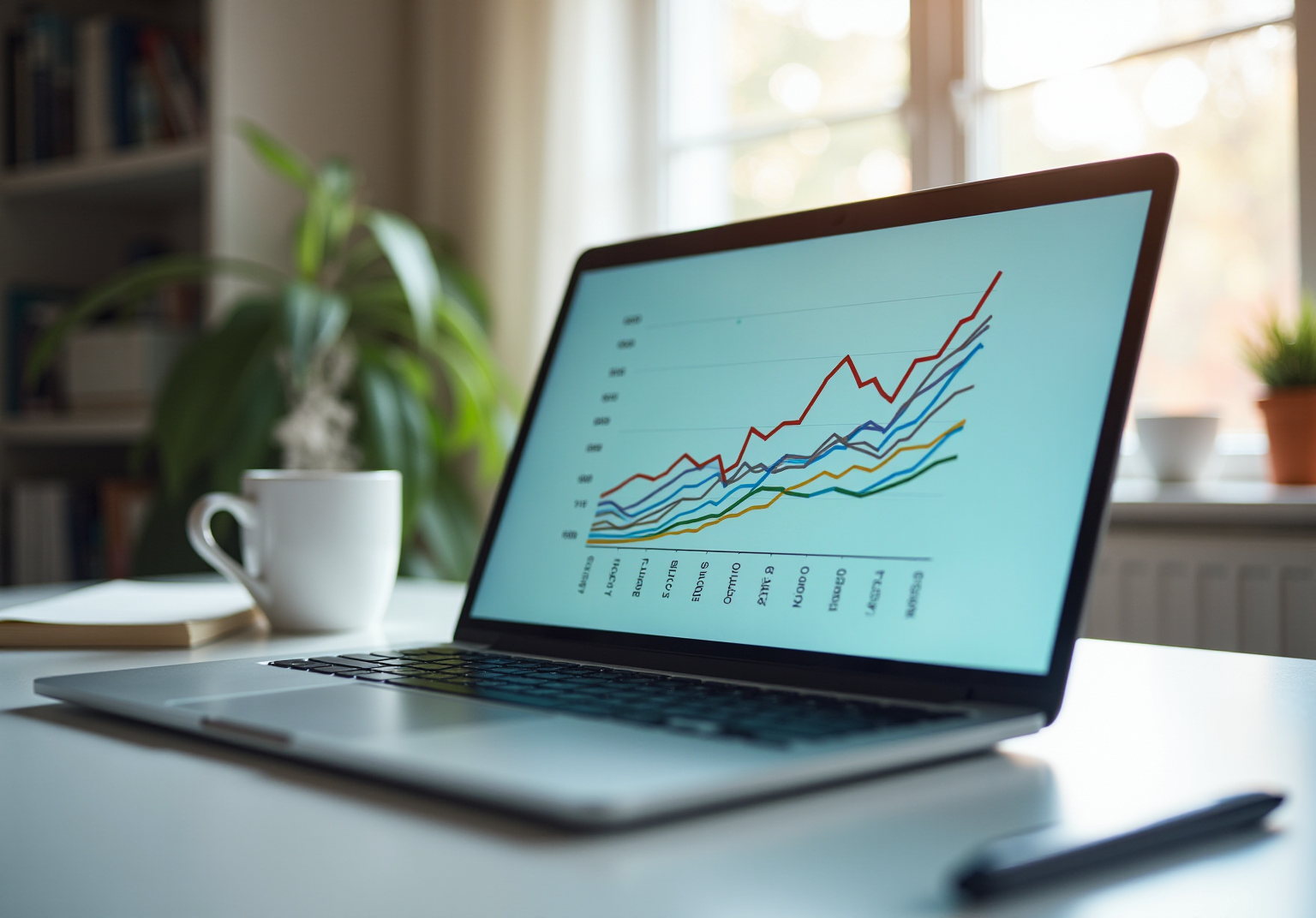
Overview
Calculating a conversion rate is essential for any marketer aiming to measure effectiveness. To determine this rate, follow these steps:
- Divide the number of desired actions—such as purchases or sign-ups—by the total number of visitors to a website.
- Multiply the result by 100 to express it as a percentage.
This straightforward calculation not only provides insight into marketing performance but also serves as a critical indicator of profitability. The article delineates a step-by-step approach for this calculation, emphasizing its significance in assessing marketing effectiveness. Additionally, it highlights common pitfalls to avoid, ensuring accurate measurement and fostering informed decision-making.
Introduction
Understanding the intricacies of conversion rates is paramount for any business determined to excel in the competitive digital landscape. This essential metric not only signifies the effectiveness of marketing strategies but also has a direct correlation with revenue and profitability. Yet, numerous businesses struggle with accurately calculating their conversion rates, often resulting in lost opportunities for growth.
To ensure these calculations are not only precise but also actionable, what steps can be taken to drive enhanced performance?
Define Conversion Rate and Its Importance
Conversion percentage represents the proportion of visitors to a website who achieve a desired action, such as making a purchase or subscribing to a newsletter. To understand how do you calculate a conversion rate, this metric is determined by dividing the number of desired actions by the total number of visitors and then multiplying by 100. For instance, if 1,000 visitors come to your site and 50 make a purchase, your successful transaction percentage would be (50/1000) * 100 = 5%. Understanding how do you calculate a conversion rate is crucial, as it directly influences revenue and profitability. Understanding how do you calculate a conversion rate is essential, as a leads to increased sales without the need for attracting more visitors, making it a vital measure for assessing the effectiveness of marketing strategies and website design.
In 2023, the average e-commerce conversion rate stood at approximately 2.9%, with significant variations across different sectors. For example:
- The food and beverage industry boasted a conversion rate of 4.9%.
- The home and furniture sector lagged behind at merely 1.4%.
This disparity highlights the importance of improving conversion metrics for direct-to-consumer (DTC) brands, as even slight enhancements can yield substantial revenue growth. Notably, Amazon Prime members enjoy an impressive conversion rate of 74%, illustrating how effective customer engagement strategies can significantly boost profitability.
Moreover, building trust through social proof, such as positive reviews, can greatly enhance conversion rates. Research indicates that retailers employing personalized marketing strategies experience increased user satisfaction, which in turn drives higher sales. As competition intensifies, DTC brands must prioritize the optimization of their conversion metrics to maintain profitability and make the most of existing traffic.
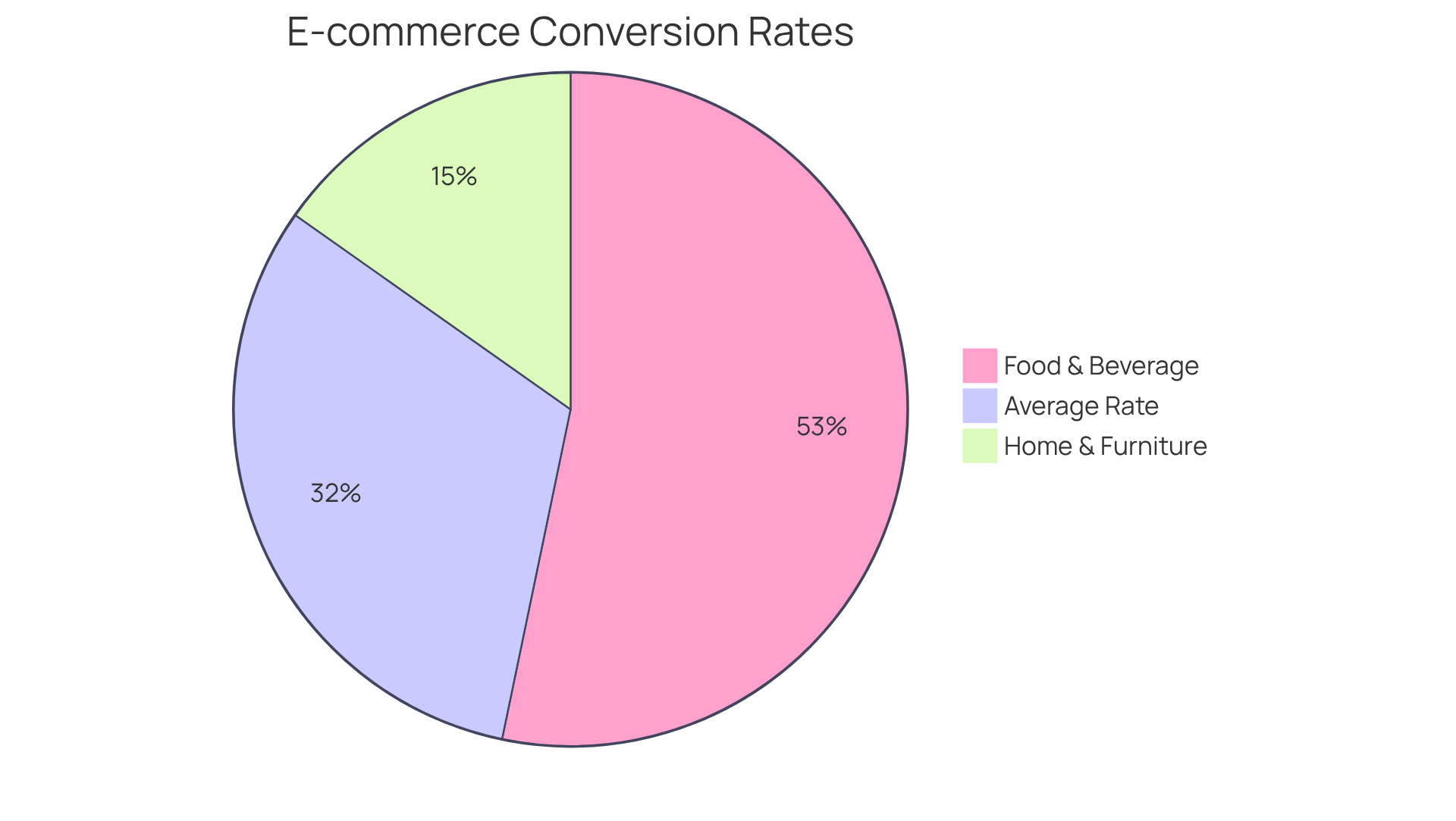
Step-by-Step Calculation of Conversion Rate
To calculate your conversion rate, follow these essential steps:
- Determine Your Total Visitors: Begin by utilizing analytics tools such as Google Analytics or Microsoft Clarity to ascertain the total number of unique visitors to your website over a defined period. These tools provide invaluable insights into and traffic sources, which are essential for accurate calculations.
- Count Your Conversions: Next, identify the number of desired actions completed during the same timeframe. This could encompass purchases, sign-ups, or any specific goals you have established.
- Apply the Formula: Now, apply the formula:
Conversion Rate = (Number of Conversions / Total Visitors) * 100
For instance, if you had 2,000 visitors and 100 conversions, your calculation would be (100/2000) * 100 = 5%. - Evaluate the Outcomes: After determining your success metric, contrast it with industry standards. For example, eCommerce success percentages generally vary from 2% to 5%, while DTC brands employing effective strategies can achieve higher percentages. Should your performance fall below expectations, consider exploring optimization strategies such as enhancing user experience, improving product listings, or employing A/B testing to refine your approach.
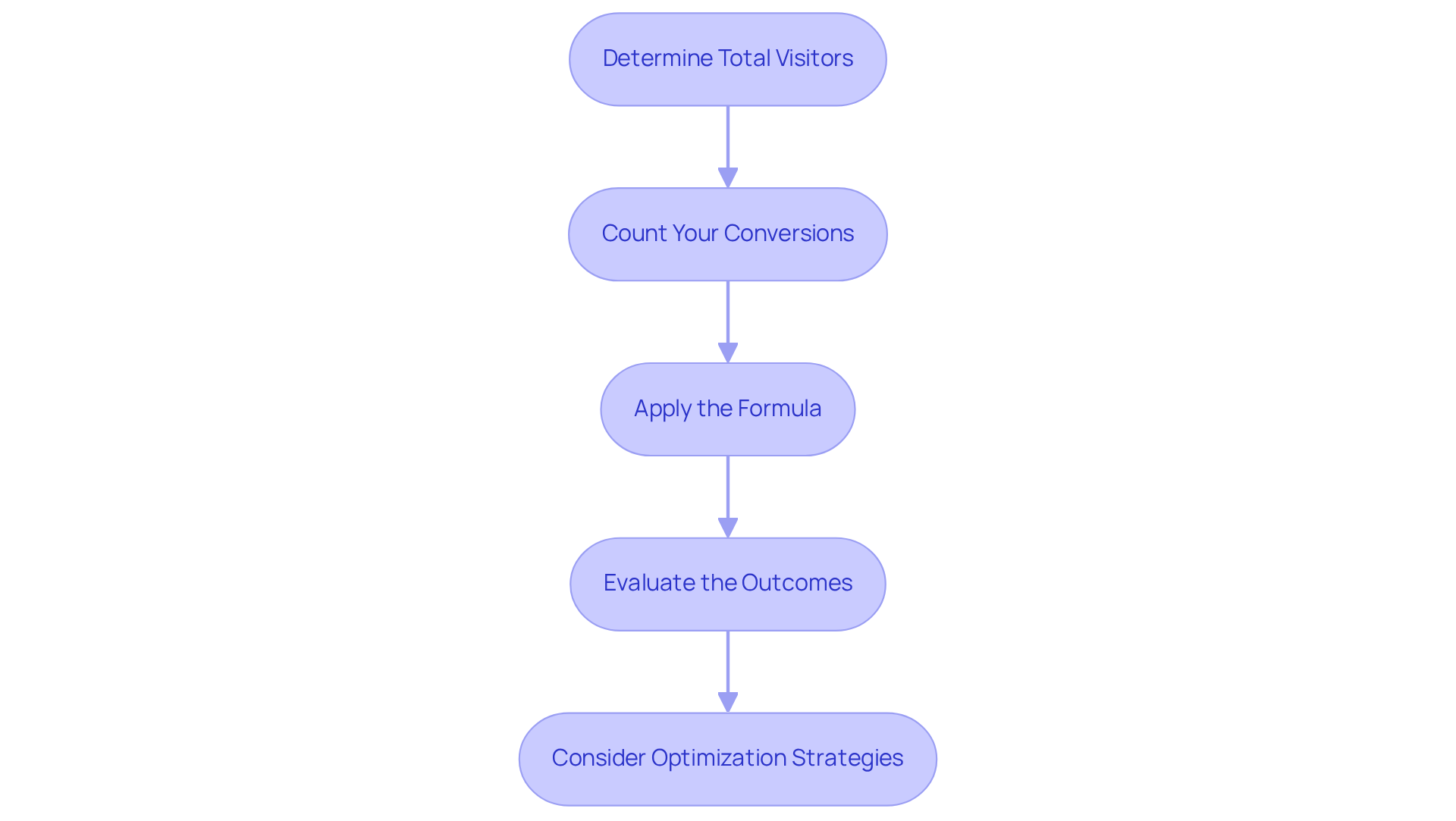
Identify Common Mistakes and Troubleshooting Tips
When calculating conversion rates, it is essential to avoid common pitfalls that can skew your results:
- Not Defining Clear Goals: It is imperative to clearly define the actions you want to measure. Without , your performance metrics may lead to misleading interpretations. Companies focusing on customer-centric approaches are nearly 60% more profitable than their counterparts, underscoring the importance of establishing clear goals. For instance, a $30M clothing brand that partnered with Parah Group experienced a 35% increase in performance after implementing targeted strategies such as adjusting product pricing and reducing excessive pop-ups.
- Ignoring Time Frames: Always specify the time frame for your data collection. Comparing data from different periods without context can lead to inaccurate conclusions.
- Counting Non-Unique Visitors: Focus on counting distinct visitors rather than total page views, as the latter can inflate your performance metrics and misrepresent user engagement.
- Ignoring Seasonal Changes: Be cognizant of seasonal trends that can impact your traffic and outcomes. Analyzing data over extended periods can provide a clearer understanding of performance.
Troubleshooting Tips:
- If your conversion rate is unexpectedly low, consider implementing A/B testing to identify potential issues with your website design or messaging. Minor adjustments, such as altering call-to-action button colors, can yield results within days. For example, Grab Green, a $15M cleaning product brand, improved their average order value (AOV) by 80% through strategic testing and adjustments.
- Utilize heatmaps to gain insights into visitor behavior on your site, helping you identify areas that may require improvement. This approach can reveal where users are clicking and how they navigate your pages, allowing for targeted enhancements.
- Regularly assess your transformation metrics and adjust strategies based on results. For example, understanding how do you calculate a conversion rate illustrates that improving your success percentage from 2% to 4% can double your outcomes without increasing traffic costs, emphasizing the importance of continuous optimization. The cannabis brand STRNG Seeds achieved a 90% increase in AOV by employing effective upselling techniques.
- Incorporate expert insights, such as Agnieszka Łepkowska's assertion that "enhancing your transformation effectiveness can have a significant impact on your bottom line," to reinforce the value of these strategies.
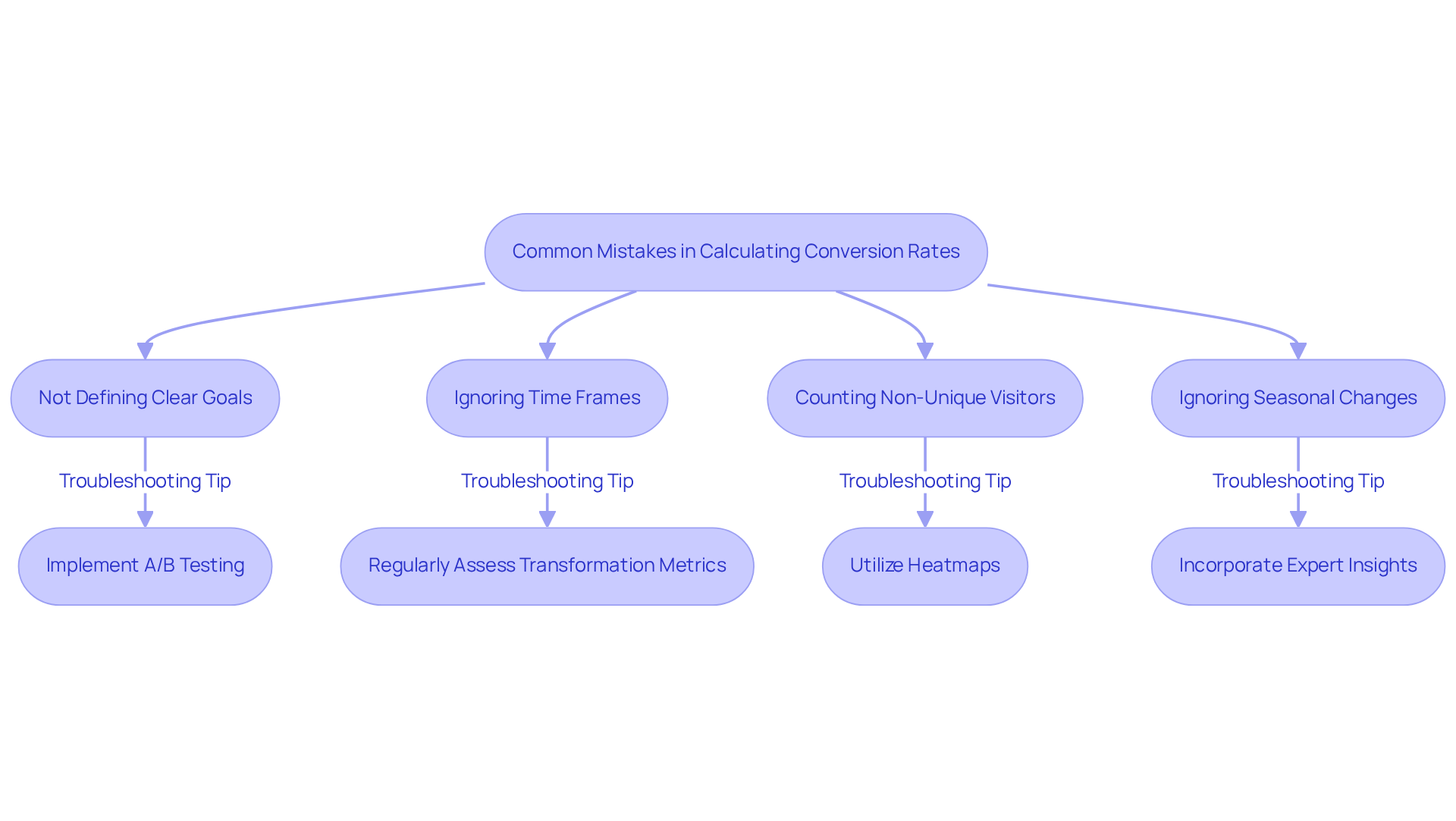
Explore Tools and Resources for Conversion Rate Calculation
To effectively calculate and analyze your conversion rates, consider leveraging the following powerful tools:
- Google Analytics: This essential platform is crucial for monitoring website traffic and user behavior, facilitating an accurate assessment of outcomes. With its recent updates, Google Analytics provides , simplifying the identification of drop-off points and optimizing your funnels. Notably, even minor enhancements in conversion rates can yield substantial revenue growth.
- Hotjar: Renowned for its heatmaps and session recordings, Hotjar allows you to visualize interactions on your site. This insight is vital for understanding user behavior and refining your strategies to increase transactions. Numerous DTC brands have successfully utilized Hotjar to analyze visitor engagement, showcasing an average uplift of approximately +31.5% across personalization elements.
- Unbounce: This tool excels in crafting high-performing landing pages and includes A/B testing features to boost your success rates. By testing various versions of your landing pages, you can pinpoint which elements resonate most with your audience. As Tim Bucciarelli emphasizes, successful companies consistently test and enhance their websites based on actual visitor behavior.
- Kissmetrics: With a focus on customer behavior, Kissmetrics offers profound insights that can inform your strategy for increasing sales. Its analytics enable you to understand how visitors interact with your site, allowing for targeted enhancements that can significantly improve success rates.
- Crazy Egg: Providing visual reports and A/B testing tools, Crazy Egg facilitates effective analysis of user behavior. Its features empower you to make informed decisions that enhance your site's performance and drive better outcomes.
By utilizing these tools, you can gain invaluable insights into your website's performance, which can help you understand how to calculate a conversion rate, enabling data-driven decisions that enhance your conversion rates. Successful online stores continually test and refine their strategies based on real user behavior, ensuring they remain competitive in the ever-evolving eCommerce landscape.
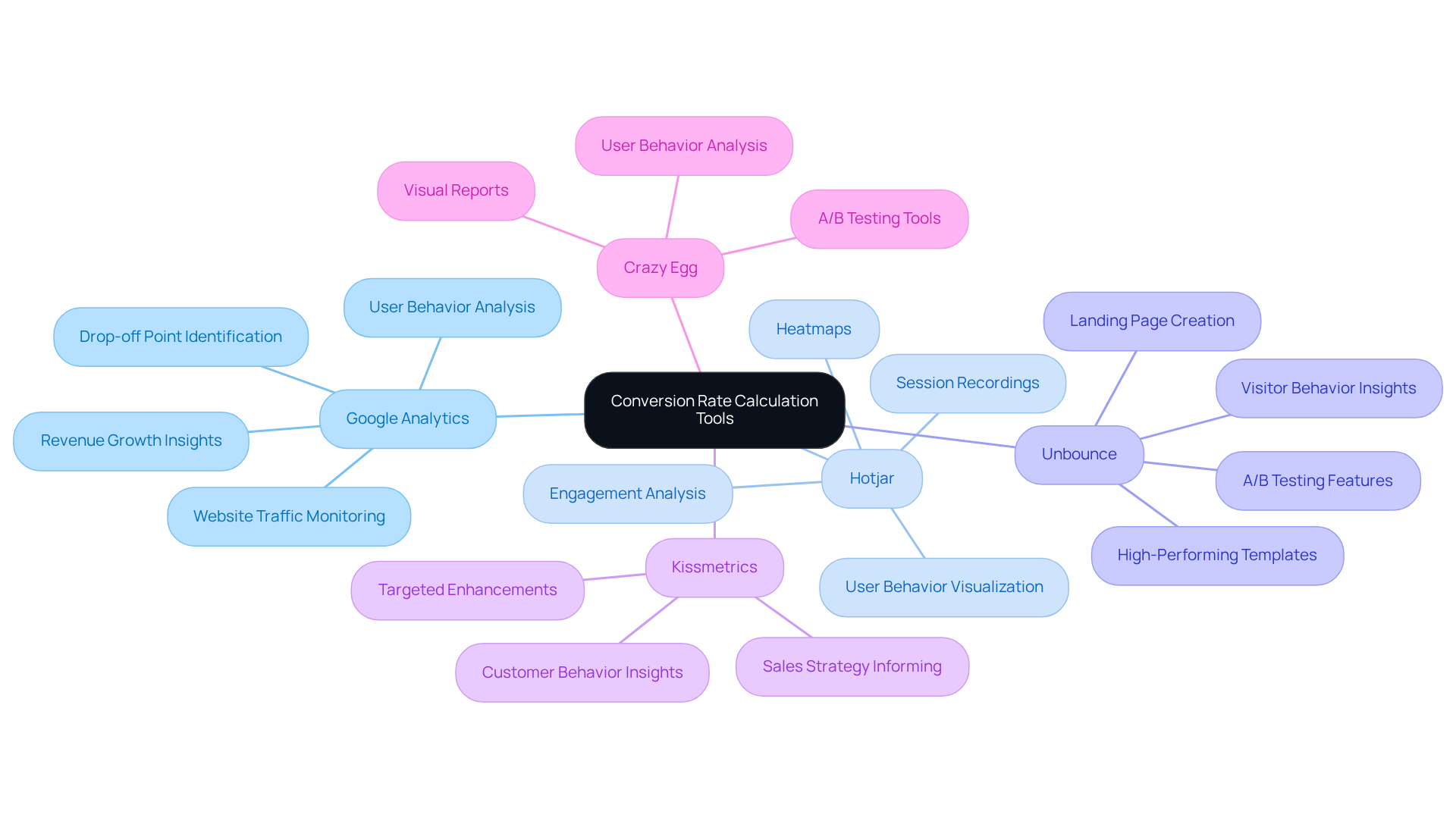
Conclusion
Understanding how to calculate a conversion rate is fundamental for any business aiming to optimize its online performance. This metric not only measures the effectiveness of marketing strategies but also highlights the potential for increased profitability through improved visitor engagement. By mastering the calculation and implications of conversion rates, businesses can better align their efforts to achieve desired outcomes.
The article delves into the intricacies of conversion rates, providing a step-by-step guide on how to accurately calculate this crucial metric. It emphasizes the importance of:
- Defining clear goals
- Avoiding common pitfalls
- Utilizing effective tools to track and analyze performance
Key insights, such as the significant differences in conversion rates across various industries and the impact of personalized marketing strategies, reinforce the need for continuous optimization to stay competitive.
Ultimately, the significance of understanding and calculating conversion rates extends beyond mere numbers; it represents an opportunity for businesses to enhance their overall strategy and drive growth. By prioritizing conversion rate optimization, brands can unlock untapped potential within their existing traffic, ensuring they not only survive but thrive in a competitive landscape. Embracing these practices is not just advisable but essential for any business looking to maximize its online success.
Frequently Asked Questions
What is a conversion rate?
A conversion rate represents the proportion of visitors to a website who achieve a desired action, such as making a purchase or subscribing to a newsletter.
How do you calculate conversion rate?
To calculate conversion rate, divide the number of desired actions by the total number of visitors and then multiply by 100. For example, if 1,000 visitors come to your site and 50 make a purchase, the conversion rate would be (50/1000) * 100 = 5%.
Why is understanding conversion rate important?
Understanding conversion rate is crucial as it directly influences revenue and profitability. A higher conversion rate leads to increased sales without needing to attract more visitors, making it a vital measure for assessing the effectiveness of marketing strategies and website design.
What was the average e-commerce conversion rate in 2023?
The average e-commerce conversion rate in 2023 was approximately 2.9%, with significant variations across different sectors.
Which industry had the highest conversion rate in 2023?
The food and beverage industry had the highest conversion rate in 2023, boasting a rate of 4.9%.
Which industry had the lowest conversion rate in 2023?
The home and furniture sector had the lowest conversion rate in 2023, with a rate of merely 1.4%.
What is the conversion rate for Amazon Prime members?
Amazon Prime members enjoy an impressive conversion rate of 74%, illustrating the effectiveness of customer engagement strategies.
How can social proof impact conversion rates?
Building trust through social proof, such as positive reviews, can greatly enhance conversion rates by increasing consumer confidence in purchasing decisions.
What role does personalized marketing play in conversion rates?
Research indicates that retailers employing personalized marketing strategies experience increased user satisfaction, which in turn drives higher sales.
Why should direct-to-consumer (DTC) brands focus on optimizing their conversion metrics?
As competition intensifies, DTC brands must prioritize optimizing their conversion metrics to maintain profitability and make the most of existing traffic.
FAQs











